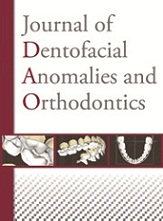Article contents
Computerized occlusal analysis in Dentofacial orthopedics: indications and clinical use the T-scan III system
Published online by Cambridge University Press: 14 March 2013
Abstract
By definition, orthodontists take special care in achieving a high quality occlusion when finishing cases, believing good contacts are essential to maintain dental health, function, and insure stable long-term of results. The T-scan III system provides a real-time digitized analysis of occlusion, in both static and dynamic modes, and records the distribution of occlusal forces within the dental arches in different clinical situations. While the first T-Scan generations versions showed weaknesses, recent technical improvements have made T-scan a reliable and reproducible tool, whose findings are independent of the operator. It is now possible to calibrate the sensitivity of the sensor for individual patients, and to evaluate the quality of records so that comparisons can be made between various stages of a patient’s treatment, as well as between patients. In addition to the accuracy of occlusal diagnosis, that often exceed clinical requirements, the T-scan III also can help understanding better each patient’s functional pattern. This article describes the T-scan III occlusal analysis system, reviews current literature that evaluated its clinical use, and outlines its principal indications in dentofacial orthopedics. Four clinical cases treated with full bonded lingual appliance will illustrate how the Tscan III influences orthodontic case finishing : one case of “occlusal discomfort” after completion of surgical and orthodontic treatments, a case of cervical abfraction lesions, a case of anterior deep bite restored with an implant-supported prosthesis, and a case of severe facial hemiatrophy treated with a complex protocol.
- Type
- Research Article
- Information
- Copyright
- © RODF / EDP Sciences
- 10
- Cited by




